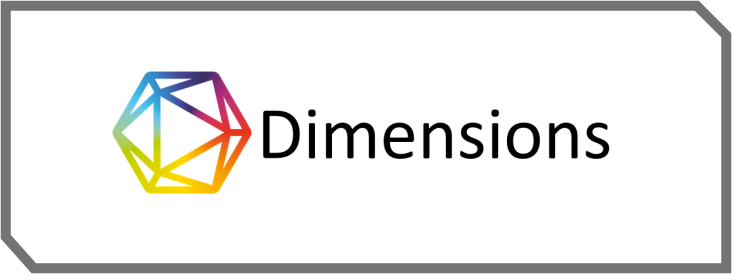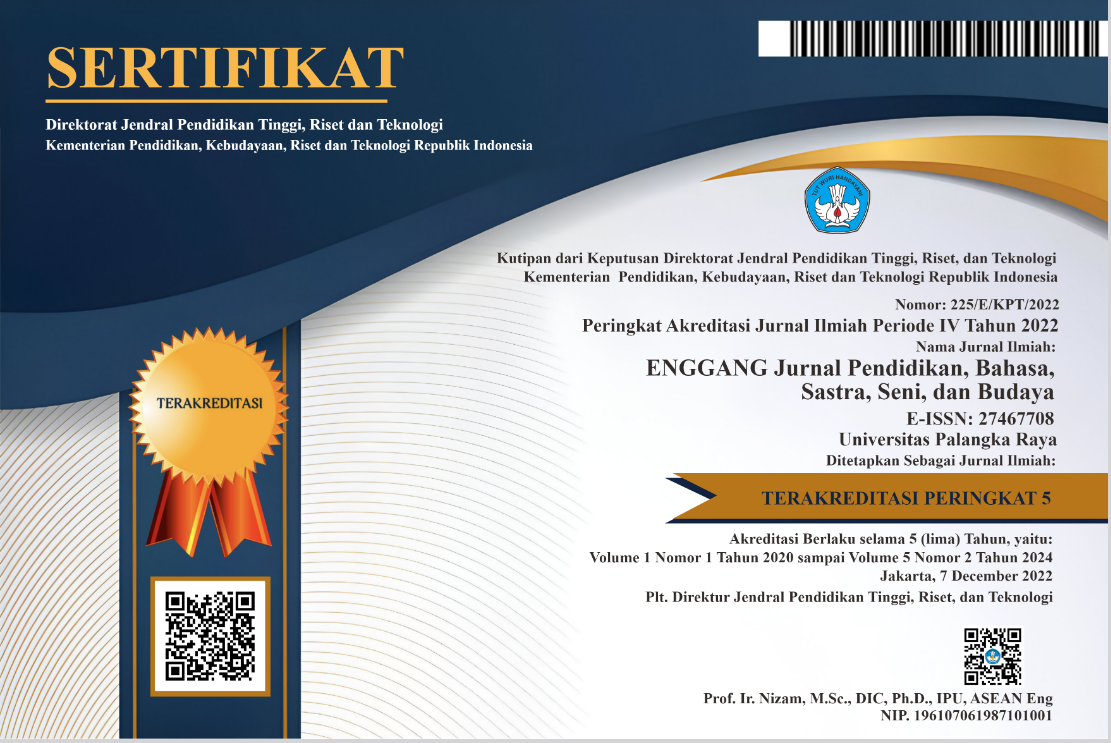Human Righteousness and Cruelty as Depicted in Anna Sewell’s Black Beauty
DOI:
https://doi.org/10.37304/enggang.v2i2.10873Keywords:
Righteousness, cruelty, treatmentAbstract
This research aims at revealing human righteousness and cruelty in Sewell’s Black Beauty. This study is regarded as qualitative research that pictures the data in the form of words and quotations. The writer collects and selects the data from the primary source, the novel itself, and the secondary source, which includes books explaining research, literature, and some other references that are relevant and support the analysis. In analyzing the data, the writer uses an objective approach that focuses on the work itself. The writer focuses on human characters in treating the animals. The result shows that humans have their own ways of treating horses. There are kind humans who treat them rightly, feed them properly, and are kind to them. But still, there are unkind humans who have bad tempers and treat these horses cruelly, torture them, and even hurt them in the name of fashion. Sometimes the horses meet kind masters and also bad masters, especially the main character in this story, Black Beauty. At the end of the story, he becomes a tough, handsome, and good horse and meets a kind master who treats the old beauty. Kindly and wisely.
Downloads
References
Abram. M.H. 1979. The Mirror and the Lamp: Romantic Theory and Critical Tradition.
New York: Oxford University Press.
Baird, John Logie. 1996. Righteousness Kindness Cruelty. Ohio University.
Bogdan, C.R.and Biklen,S.K. 1982. Qualitative Research for Education. An Introduction
to Theory and Method. Boston: Allyn and Bacon.
Griffifth, Kelly,1986. Writing Essay about Literature. USA: Harcourt Brace Jovanovich
Publishers.
Sewell, Anna. 1877. Black Beauty. Northfolk England.
Tini M. (1997). Transcendental Influences on Whitman's Perception of Science and Technology as Reflected in His Passage to India. Universitas Gadjah Mada.
Tini M., Ceisy N. W., Jennifer N. F. R., Jane G. C. T. (2019). Curriculum and Lesson Planning: Outpacing Learning Process through Evaluation on English Textbook in Senior High School. English Education Department, Universitas Muhamadiyah Makassar Indonesia.
Tini M. and Elisabeth Z. O. (2022). Applying Small Group Discussion to Enhance Students’speaking Abilityat Sma N 1 Poigar. Jurnal Pendidikan dan Sastra Inggris. Vol.2, Issue 2. pp. 101-107.
Tini M, Elisabeth Z. O. (2022). Pembelajaran Bahasa Inggris Berbasis Mobile Bagi Wanita Kaum Ibu GMIM Bukit Zaitun Sea Mitra. SAFARI: Jurnal Pengabdian Masyarakat Indonesia, Vol.2, Issue 3, pp.114-122.
Tini M. and Salaki R. J. (2020). Agile Analytics: Adoption Framework for Business Intelligence in Higher Education. Journal of Theoretical and Applied Information Technology. Vol.97, Issue 7. PP. 1032-1042.
Tini M. and Salaki R. J. (2022). English Learning Management In High School:(Classroom Action Study). Specialusis Ugdymas. Vol.2, Issues 43. Pp.1896-1906.
Tini M. and Salaki R. J. (2019). ICONS: a Mobile Application for Introduction Culture of North Sulawesi. International Journal of Innovative Technology and Exploring Engineering (IJITEE). Vol.9, Issue 1. Pp. 1137-1144.
Tini M. and Salaki R. J. (2022). Improving Students’ Vocabulary through Make a Match Technique and Number Head Together (A Classroom Action Research at SMP Negeri 2 Langowan). LITERACY : International Scientific Journals Of Social, Education and Humaniora, Volume 1, Issue 2, pp.1-20
Tini M. and Reynaldo J. S. (2016). Trend of ICT in Teaching and Learning. Proceeding: International Social Sciences Academic Conference (ISSAC 2016).
Tini M. and Salaki R. J. (2022). The Spirit of Democracy as Seen In Walt Whitman’s I Hear America Singing. Jurnal Pendidikan dan Sastra Inggris (JUPENSI), Vol.2, Issue 3, pp.55-65
Tini M. and Reynaldo J. S. (2016). Online Learning as a Paradigm of Learning in Higher Education. International Conference Proceeding. Issue 1. 9.Wellek, R and













